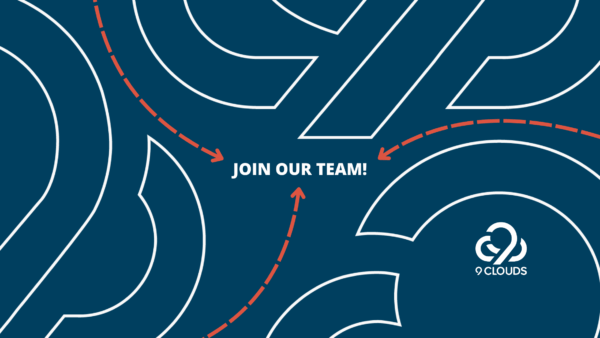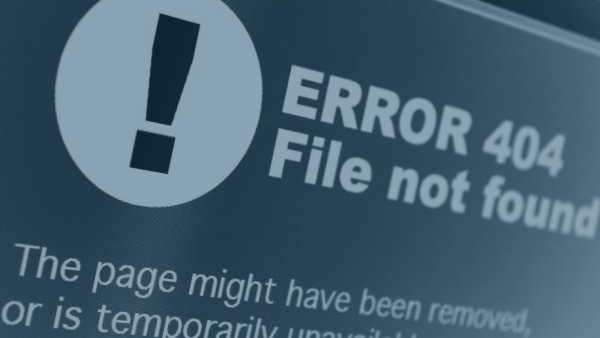
How to Disagree Without Being Disagreeable: 9 Clouds’ Conflict Resolution Tactics
Conflict is inevitable, and we certainly aren’t immune from it at 9 Clouds. We’ve all been known to dig in our heels on something.
But over the last few months, we’ve been working on developing skills to manage conflict so it doesn’t stop us in our tracks — how to disagree without being disagreeable.
When we have conflict, we need to move through it efficiently and effectively. As the CEO of 9 Clouds, I have the responsibility of facilitating conflict resolution among our staff. In this post, I’ll explore some of the conflict resolution tactics we’re using at 9 Clouds.
Remove the Screen Shield
 9 Clouds is a company of mainly millennials. I hate to generalize the behavior of an entire generation, but most of us have a fear of picking up the phone, and you can forget us dealing with an issue face-to-face if we aren’t prompted to do so. We like our screen shields.
9 Clouds is a company of mainly millennials. I hate to generalize the behavior of an entire generation, but most of us have a fear of picking up the phone, and you can forget us dealing with an issue face-to-face if we aren’t prompted to do so. We like our screen shields.
This has been an issue for us at 9 Clouds. We do all our work on computers, including much of our communication about individual tasks. We have been known to get caught in some pretty epic Basecamp and Slack battles that could have been resolved much quicker if the parties involved would have just talked face-to-face.
It may seem obvious and simple, but the first tactic for conflict resolution I’ve been encouraging at 9 Clouds is to simply talk it out in person. We can all be snarky and passive-aggressive behind our screen shields. But at the end of the day, we all have the same goal: delivering the best work for our clients and ourselves.
We’ll get there faster if we take down the shields.
Communication or Expectations?
My team now rolls their eyes when one of these words comes out of my mouth, but hear me out. I attended a session at Inbound a few years ago that suggested that all conflict can be whittled down to these two issues. It really stuck with me, and it’s had a profound effect on how I approach disagreements.
If you really think about it, every disagreement occurs because of a communication issue, an expectation issue, or a combination of both. If it’s a communication issue, was there a misunderstanding about something that was said? Was something unsaid? If it’s an expectation issue, was the goal/end result agreed upon by both parties? Did each party have the same understanding of the goal/end result?
Removing all the extraneous events of conflict and finding the issue that caused it really helps move the disagreement past “she said, he said” to a more productive discussion: what was learned and what the solution is.
Identify the root problem and move on. Don’t get bogged down in blame.
The Personality, Not the Person
 If you’re like the rest of us, you’ve probably taken at least one and probably many personality-related tests over time.
If you’re like the rest of us, you’ve probably taken at least one and probably many personality-related tests over time.
At the end of last year, the entire staff of 9 Clouds completed DiSC profiles. By completing the profiles and reviewing the results together, I wanted us all to gain some self-knowledge about what motivates and frustrates us — and learn that same information about each other.
After completing the profiles, we blocked an entire afternoon for a facilitator come help us review our results together, so we could talk about what they meant and how they could be leveraged moving forward. Ultimately, this discussion helped us understand that we need to focus on the personality, not the person when we are in disagreement.
Every human has a fight-or-flight response. When an idea of ours is challenged, often our fight turns on; it’s just natural. Learning our DiSC profiles helped us to realize both why we react the way we do and why someone else reacts the way they do.
No matter what personality test you decide to go with, be sure to review your results as a team. What you want the exercise to deliver is a deeper understanding of your team and the realization that conflict resolution should be about the personality, not the person.
“The Story I’m Telling Myself Is…”
At last year’s Inbound, Brene Brown gave a great keynote that challenged attendees to take ownership of their inner dialogue. This article gives a recap of the keynote and goes into depth on the examples she gave.
I can’t do her keynote or the article justice, so read the article if you can. Essentially, Brene talked about how our brain is always striving for neutral and will get there as fast as it can. This can often lead us to fill in gaps with unfounded beliefs and assumptions.
When approaching conflicts, she said, we should lead with the phrase “The story I’m telling myself is . . . ” to help reveal the assumptions and lies we tell ourselves when in conflict.
Using this phrase requires you to take ownership of the fact that there is likely no way that what you think about a situation is 100% accurate. That opens up discussion and sets the tone for resolution from the start.
When in conflict at 9 Clouds, if we don’t say this phrase out loud when we’re in a disagreement, we at least need to have said it to ourselves before engaging in conflict resolution.
Rip Off the Band-Aid
Conflict isn’t fun. Most people want to avoid it at all costs. But it is inevitable, and the faster you can resolve it, the better.
Rip off the Band-Aid. Consider the tactic(s) that would work best for you, and implement them.
I am honestly proud that we have conflict at 9 Clouds because here, conflict comes with a lot of passion for the work we’re doing. In most cases, the solution that comes out of the conflict makes us better at what we do.
That said, I want us to move through conflict so that both parties involved feel heard and can come to a productive solution together. These tactics help us achieve that.
Poorly managed conflict and disagreement kill effectiveness and efficiency, which are two things we are very focused on at 9 Clouds. Sign up for the latest blog posts for productivity and community posts.
DiSC Image: DiSC Profile Canada







